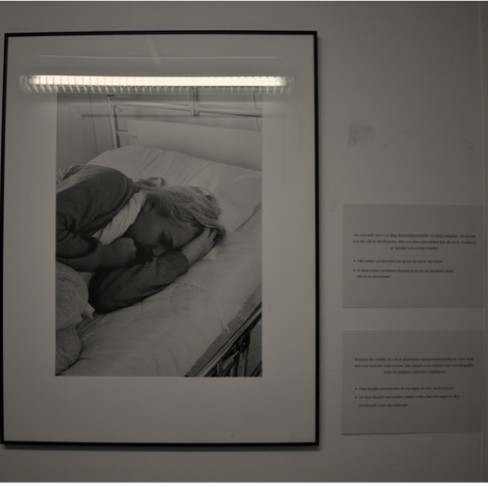Smutsiga Glas 'Dirty Glasses'
- Sara Rahmani
- Sep 9, 2022
- 2 min read
What happens when medication doesn’t work? Do you feel lost? Hopeless? How do you cope? Smutsiga Glas (‘dirty glasses’), guides you through the lived experience of Maria Sjöö’s journey through post-natal depression, her struggle to recover, and the science that underpins the complexities of treatment response.

“To be depressed is like walking in a daze” the doctor said.
“Like dirty glasses” I asked.
She laughed. I didn’t...
Together with Maria Sjöö, and CREATE-REACT, we hosted a week long exhibition in Uppsala, Sweden. Held in an old medical clinic, the audience were guided through narrow corridors where Maria’s photographs depicting her experience of post-natal depression were hung. In this work, Maria delves deep into the emotional and physical changes she went through, her complete loss of interest, her withdrawal from friends and family, her hope for support and desperation to recover.

Photo from the exhibition launch. Just as Maria describes in her story, visitors walk along a corridor of an old medical clinic.
Mental illness affects one in four individuals and depression is the leading cause of disability globally. People can become depressed for a number of reasons and can be at increased risk due to several factors such as genetics, demographics, and life experiences. As a result, any two people who suffer from depression may in fact suffer from two completely different illnesses.
Through conversation and the exchange of ideas, we generated questions alongside Maria’s story that highlight the complexity of mental illness through a scientific lens. How are there so many paths to depression? Why is there so much variability in treatment response? What are the other complexities that mental health researchers should consider?
Photo of the set-up of photographs with their respective cards. In the left photo you can see the bright clinical lights reflected in the glass.
The exhibition aimed to engage audiences with research through lived experience. Through interdisciplinary collaborations like these, we hope to open up two-way communication, to bridge the gap between science and the lives of the people it has the potential to help.

Sara Rahmani (left) and Maria Sjöö (right) have together created and launched the exhibition. Most of the conversations that laid the groundwork for the scientific expression through art took place in a bright lit kitchen, on the outskirts of their hometown, Uppsala, Sweden.
Did you miss the event? Don’t worry, this event will be hosted in more locations over the coming years. Stay tuned through our website or twitter to find out when we are coming to you!
Acknowledgements
Graphics: Erin Mangan. Funding: Laidlaw Foundation. Collaborators: NBV, Blå Bandet. Copy writing: Ellen Kingfors. Photography: Hanna Gabrielsson.

.png)



